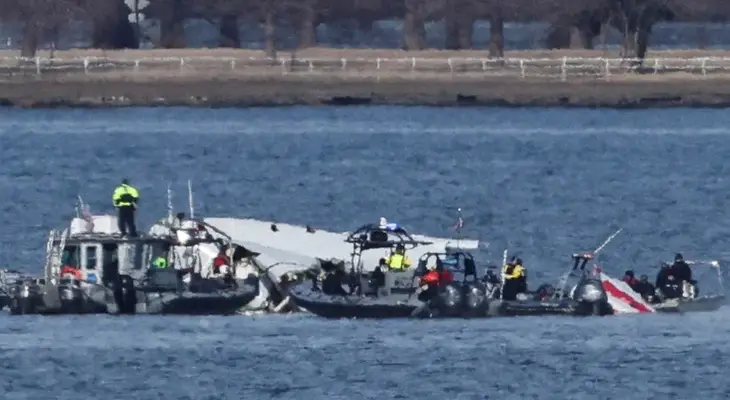## Report Details Critical Decision Leading Up to D.C. Helicopter-Plane Collision
A newly released investigation reveals that the pilot of a military Black Hawk helicopter disregarded instructions from air traffic control moments before it collided with a commercial airliner over Washington, D.C., in January, contributing to a devastating accident that claimed 67 lives.
The findings, published by *The New York Times*, detail the final communications between the helicopter crew and controllers leading up to the incident. The Black Hawk, piloted by Captain Rebecca Lobach, was undergoing an annual flight evaluation with Chief Warrant Officer 2 Andrew Loyd Eaves acting as her instructor.
After being alerted to the presence of a nearby airliner, the pilots acknowledged the warning and requested “visual separation.” This practice allows aircraft to maintain safe distances based on their own observation rather than relying solely on air traffic control guidance. However, this decision would prove fatal.
“The Black Hawk was just 15 seconds away from intersecting the jet’s flight path,” the report stated. “Warrant Officer Eaves then directed his attention to Captain Lobach, indicating he believed air traffic control intended for them to turn left, toward the eastern riverbank.”
Turning left would have created crucial additional space between the helicopter and Flight 5342, which was descending towards Runway 33 at an altitude of approximately 300 feet. Despite this recommendation from her co-pilot, Captain Lobach did not alter course.
Captain Lobach, a resident of Durham, North Carolina, had served as an aviation officer in the Army since July 2019, accumulating roughly 500 hours of flight time in Black Hawk helicopters. She was assigned to the 12th Aviation Battalion at Fort Belvoir, Virginia, and received multiple awards including the Army Commendation Medal and National Defense Service Medal. Notably, she also served as a White House military social aide within the Biden administration.
The flight crew included Staff Sergeant Ryan O’Hara in addition to Lobach and Eaves.
The collision immediately sparked intense national debate regarding air traffic control protocols. Transportation Secretary Vance Duffy subsequently launched an investigation into the incident.
Secretary Duffy has announced a four-year plan to upgrade airport air traffic control systems with advanced technology, including incorporating artificial intelligence (AI) to identify areas prone to near misses. According to a recent report from the National Transportation Safety Board (NTSB), Reagan National Airport has experienced 85 such incidents – defined as situations where aircraft are separated by less than 200 feet vertically and 1,500 feet laterally.
“We’re confronting near-miss events, and if we don’t adjust our approach, lives will be lost,” Secretary Duffy stated. “That wasn’t done in this case. Perhaps there was a misplaced focus; however, within this administration, safety remains our priority.”


